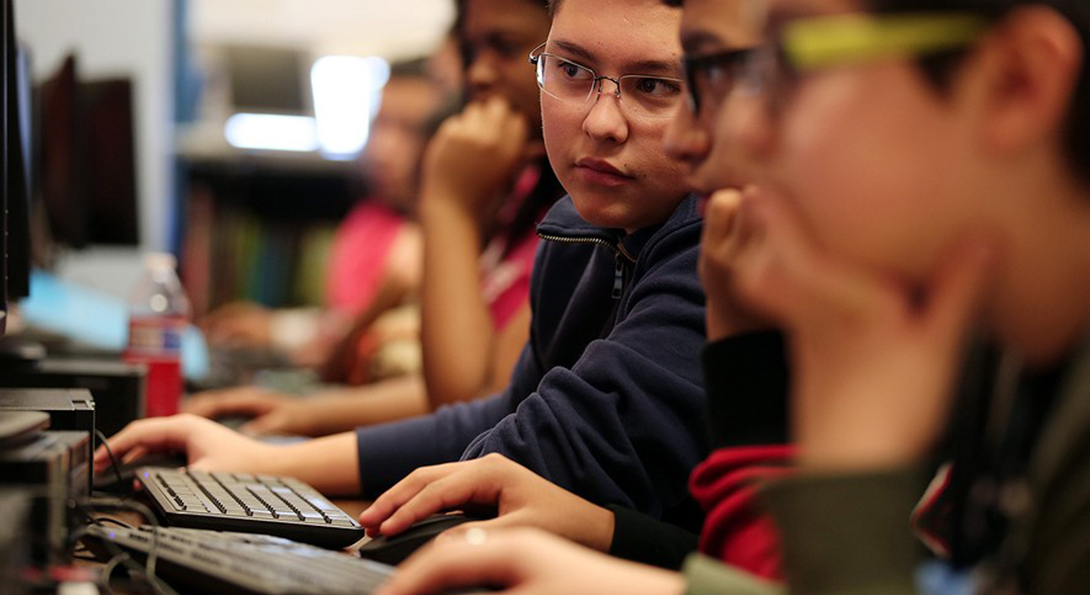Hour of Code Day Creates Career Access

When teachers at Wells Community Academy High School on Chicago’s near northwest side asked their students how they pictured a computer programmer before a coding event at the school, the illustrations they received back depicted nerdy White males with glasses and poor social skills hunched over a computer.
No offense to nerdy White males, but Wells principal and EdD Urban Education Leadership student Rita Raichoudhuri is pushing to eliminate that stereotype among the predominantly Black and Latina/o student body once and for all. Her school participated in the Hour of Code day on December 9, 2014, joining with students and across the world and even President Barack Obama in one massive hour of coding.
“We’re trying to prepare our students for a future that is already here,” Raichoudhuri said. “They are glued to technology all the time, to phones and tablets, but we are still doing education in the old archaic way of sitting in a chair and looking at a blackboard or text. They need an opportunity to provide them with all the tools.”
Sixty volunteers from 12 technology firms across the country converged at Wells for the event. Teachers coordinated the festivities, having participated in training beforehand. Led by a teacher and a volunteer, every classroom across the school offered training in the basic steps of coding and culminated with students writing code to create movements of characters from Angry Birds, Shrek and a handful of other video games.
The event coincided with the expansion of the school’s computer science program and has helped boost applications from 8th graders in neighborhood elementary schools interested in attending Wells specifically for the computer science program.
For Raichoudhuri, the event and the expanded program are part of a concerted effort to build vocational career paths for Wells students. While Chicago Public Schools push for college enrollment and persistence, Raichoudhuri acknowledges that not every student will move on to higher education. She says she wants her students to realize they have options to attend transitional vocational programs that can lead to internships and high quality jobs like coding.
“I think they learned that you don’t have to be a genius to code—they just didn’t know what it was,” Raichoudhuri said. “If we don’t start exposing our students to these opportunities around technology and computers, then that is really a disservice to them.”
Raichoudhuri says teachers were at first skeptical of cutting into instructional time, but from a leadership perspective, she relied on several teacher leaders to ensure the entire staff was on board with the event. She says if she tried to force the event to take place, teacher reaction would have been drastically different. Ultimately, the outcome itself was the clincher, with teachers observing high levels of engagement among the student body and in particular the inclusion of students with special education needs in the event.